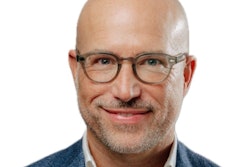
However, conferences have also come in for criticism in recent years, with detractors pointing out that the cost of attendance is prohibitively high for graduate students, early career scholars, contingent faculty, and professors from under-resourced schools. Others have highlighted the environmental consequences of all that travel, and minoritized researchers describe an atmosphere of microaggressions, disregard, and harassment.
During the COVID-19 pandemic, academic societies were forced to pivot, with many rapidly shifting to fully virtual or hybrid convenings. As the pandemic wanes, many may be tempted to return to in-person-only formats. But a new report from ITHAKA S+R and JSTOR warns against this path. Conference organizers, it argues, should increase their experimentation with virtual and hybrid events, for their own long-term health.
The report, which was done in partnership with representatives from 17 scholarly societies and was funded by the Alfred P. Sloan Foundation, comes at a critical moment for these academic organizations. A 2022 survey by Wiley found an 8% decline in their membership, which was at the lowest level in nine years. Less than a third of early career researchers—those who often cannot afford to attend conferences—belong to academic societies, in contrast to nearly three-quarters of those 31 or more years into their career. Decisions about conference formats, the report warns, reflect an academic society’s values, and which kinds of academics they prioritize.
Virtual formats offer potential solutions to some of the most common criticisms of conferences. The report cites research showing that virtual conferences attract significantly more diverse participants and attendees than in-person ones.
“It’s more accessible financially,” said Dr. Jessica Pokharel, manager of research and discovery at JSTOR Labs and an author of the report. “A lot of the virtual and hybrid conferences were low or no cost to members compared to the in-person conferences.”
The ability to attend from home is a factor as well.
“Imagine you’re in a sandwich generation, where you need to be there for your parents and your kids, potentially,” said Pokharel. “It’s really logistically difficult to be able to travel for a few days or a week.”
Virtual conferences can also mitigate the toxic racial atmosphere that sometimes suffuses large academic gatherings, according to Dr. Kyra Sutton, an assistant teaching professor of human resource management at Rutgers University who has written about “conferencing while Black.” At in-person conferences, Sutton had felt judged by white scholars for attending Black-themed events and wondered how she would be perceived when she was talking to groups of other minoritized researchers.
At a virtual conference, “I felt like I was wearing a cloak,” she said, because others didn’t know her race. Sutton felt safer and more comfortable and was able to focus a greater amount on the questions others were asking instead of who was asking them.
“The power differential is less obvious,” she said.
The report acknowledges some downsides to hybrid and virtual conferences as well. Although hybrid conferences can be cheaper for participants, they’re more expensive for academic societies, which have to pay for video equipment and personnel.
It’s also possible that, without careful planning, a hybrid event’s in-person programming could be seen as more prestigious and the online events as lower-status. Given the different profiles of who’s likely to attend conferences in-person and virtually, this could reinforce familiar, problematic hierarchies, according to Dr. Dylan Ruediger, program manager for Ithaka’s research enterprise and an author of the report.
 A concept drawing for Mixer.ly
A concept drawing for Mixer.ly
Scholarly organizations may also be encountering virtual event fatigue, with members craving in-person connection as the pandemic wanes. The report argues that societies shouldn’t give up on hybrid and virtual events yet. The uniqueness of the past few pandemic years means that it’s difficult to tell what anyone’s true appetite is for online events, said Ruediger.
He recommends that academic societies remain open to virtual and hybrid events at least for another few years, and he praised those societies which have decided to alternate in-person and online conferences. Although Ruediger sees this experimentation as crucial, he’s not certain that many scholarly organizations will have the stomach for it. Trying new ideas involves an investment of resources with no sure payoff and the disruption of planning processes that run year-round. Many societies also have contingents of older members who strongly prefer in-person events.
“Whether or not we’re going to see continued experimentation is hard to say,” said Ruediger. “Right now, the forces that are discouraging radical reinvention look like they’re stronger.”
But the consequences of not adapting could be serious. The makeup of the academy is changing, and the report suggests that academic societies which assume that hybrid and virtual conferences were only a pandemic-era pivot may find themselves left behind.
“I think that societies will find their membership increasingly unlike the larger scholarly community that they are designed to serve,” said Ruediger. “I don’t see how you solve that problem without looking at the meeting as a very important vessel for change.”
Jon Edelman can be reached at [email protected]















